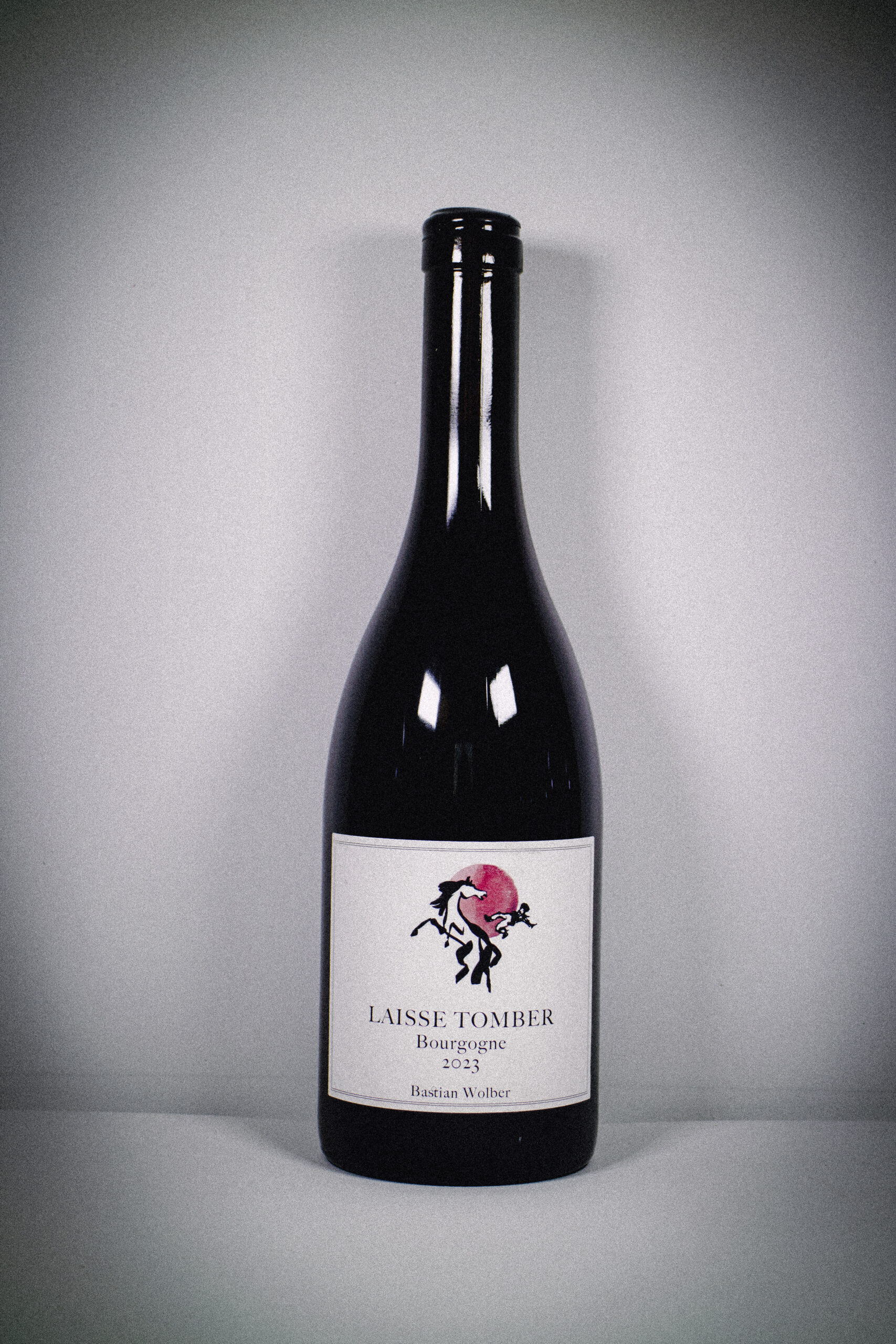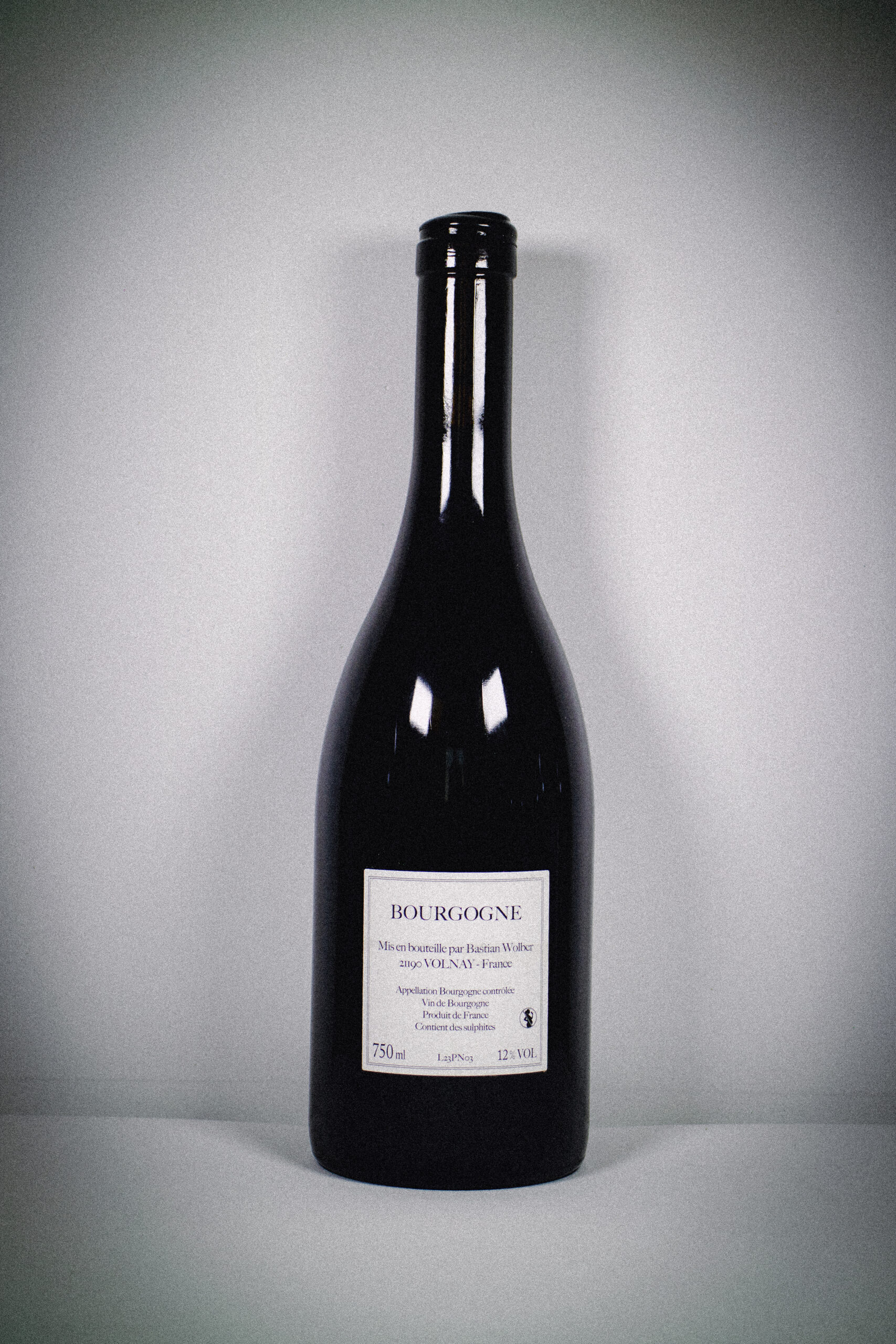Bourgogne Rouge Laisse Tomber
Bourgogne Rouge AOC
Bastian Wolber procured the grapes for his first "Burgundy" labelled wine in the Mâconnais and Côte du Couchois areas. Both vineyard sites feature vines planted in the 1970s, but with a distinction in soil composition: in the Mâconnais, specifically in the village of Plottes, the subsoil is predominantly composed of sand and limestone, while in the Côte Chalonnaise region the iron-rich soil rests on a granite base. The harvest was carried out manually, and the grapes were vinified separately. Subsequently, a partial carbonic maceration lasting approximately seven days in open vats was chosen, without any addition of carbon dioxide. Alcoholic fermentation was initiated by a gentle crushing of the berries, followed by inoculation with a pied de cuve. The mass was subjected to periodic punch-downs before the completion of fermentation, with occasional pump-overs. This process lasted approximately fourteen days, at the end of which the pressing was carried out using a vertical press. Malolactic fermentation took place in wooden vessels. The aging in 228 and 350-liter oak barrels lasted approximately eighteen months. The wine underwent neither filtration nor fining. No sulfur dioxide was used, and the total sulfite level remained below 10 mg/l.


